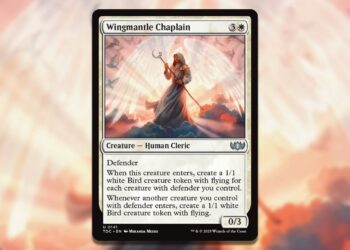Quick Links
Unlike many traditional tabletop RPGs, Avatar Legends features a distinctive leveling system based on growth instead of numerical experience points or traditional levels. Within the realm of Avatar: The Last Airbender, player characters can achieve growth, which serves as an alternative to experience points or other currencies.
This approach may initially seem perplexing, yet the growth system is fairly straightforward and easy to grasp. However, keep in mind that leveling up may differ depending on the chosen playbook, so it’s important to understand the specific rules for each character. Here’s what you need to know to advance your character in Avatar Legends.
What Is Growth?
As noted, growth acts as the leveling currency in Avatar Legends, comparable to XP in other RPGs like Dungeons & Dragons or milestone systems.
When you gain growth, you can use it to enhance your skills and strengthen your character.
Typically, in Avatar Legends, growth is accumulated as a group, which means players are unlikely to outpace one another.
However, based on the playbooks used, some players might gain extra growth at a faster rate.
Unlike acquiring new bending techniques or combat skills, growth emphasizes your character’s development and journey.
Growth reflects the experiences you gather as your character faces challenges, has their views tested, and embodies their story effectively.
How To Earn Growth
As you play Avatar Legends, there are three key ways to gain growth:
- Answering Growth Questions
- Balance Moves
- Playbook-Specific Moves
Generally, your main source of growth will come from answering growth questions, which we’ll explain in detail below.
Answering Growth Questions
At the conclusion of each session in Avatar Legends, players will respond to a series of growth questions based on the events of that session.
This process is referred to as taking the growth move.
These questions are detailed extensively in Chapter Seven of the Avatar Legends Core Book, often focusing on themes such as world discovery, overcoming significant threats, or progressing your character’s story.
If you answer ‘yes’ to any of the growth questions, you check off a growth box on the second page of your playbook.
After checking off four growth boxes, you receive a growth advancement that can be used to enhance your character.
Balance And Playbook Moves
While growth questions are a primary method for earning growth, there are also specific moves tied to playbooks and balance that can help you achieve growth.
The rules for playbook-specific moves differ for each playbook and are outlined within the playbook itself.
For instance, the Icon playbook features a move called ‘Otter-Penguins, Unagi, and Hot Springs’ that allows players to roll with Harmony when visiting an uninhabited location to potentially gain growth based on the roll’s success.
Each playbook has its unique rules, but every character has access to the balance move known as ‘Resist Shifting Your Balance.’
When using this move, you resist a non-player character (NPC) attempting to influence your character’s balance.
As you accumulate growth and advancements, if you no longer have advancements to take, it might be time to retire your character.
If successful, you maintain your current balance and may mark growth when you act to prove the NPC wrong, along with additional benefits.
How To Use Growth Advancements
Once you’ve gained four growth points through various methods, you can use a growth advancement to enhance your character.
Some advancements can be taken a limited number of times.
In total, there are five advancements available for your character:
Overall, selecting new moves and increasing stats will likely be the most beneficial for character progression.
Changes to balance and moments of balance may not always be impactful and can reset after a period of time.





